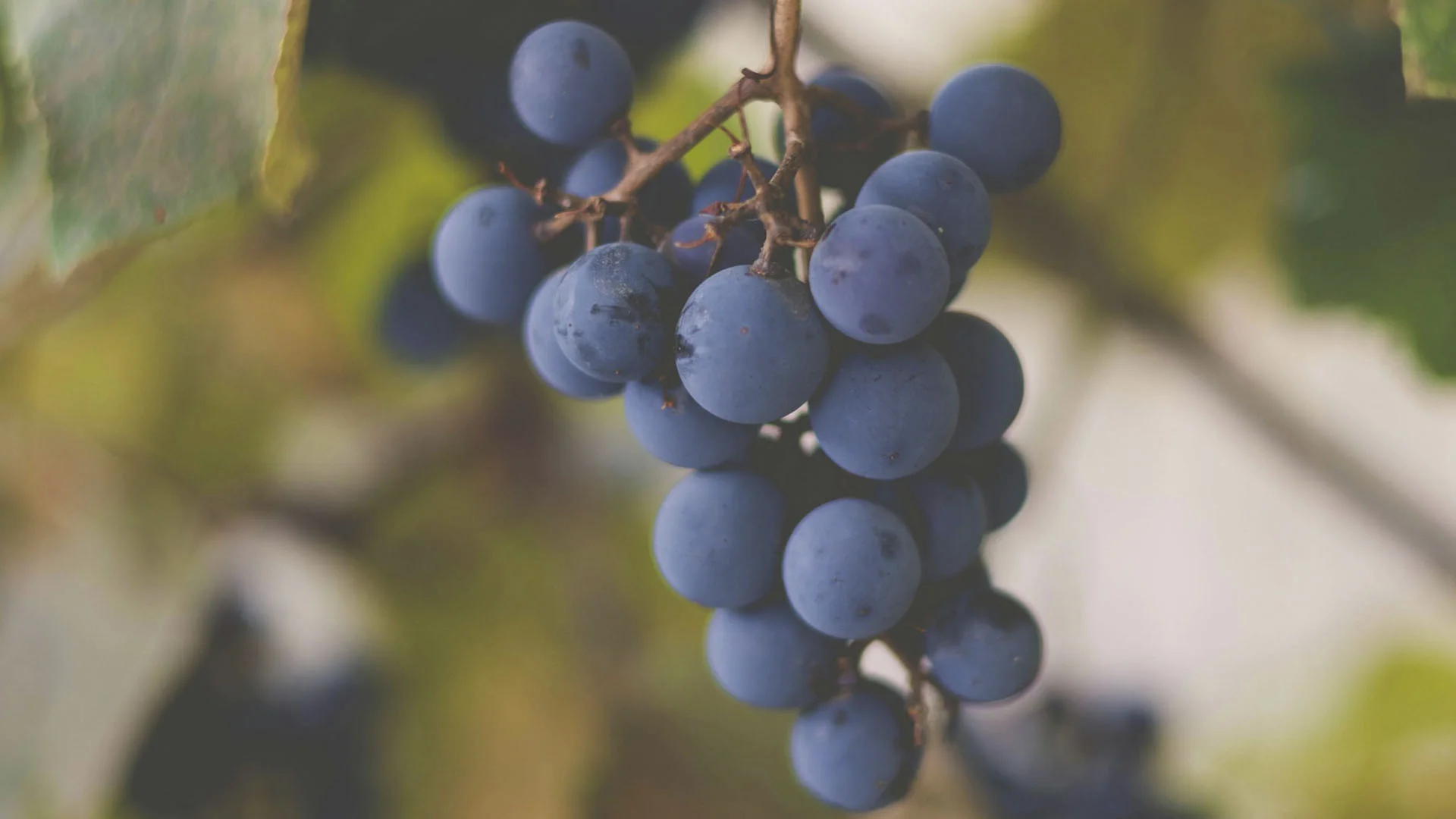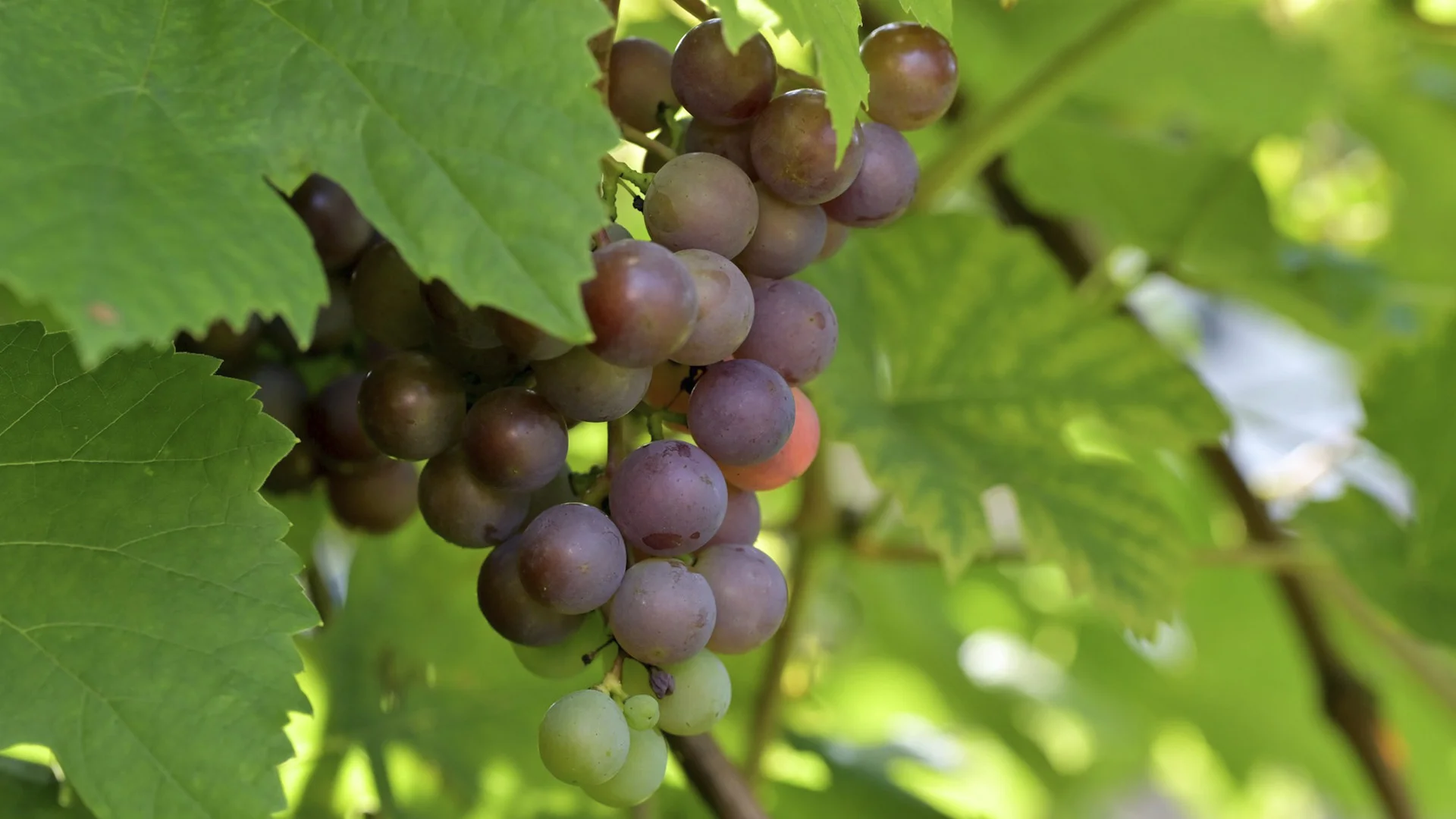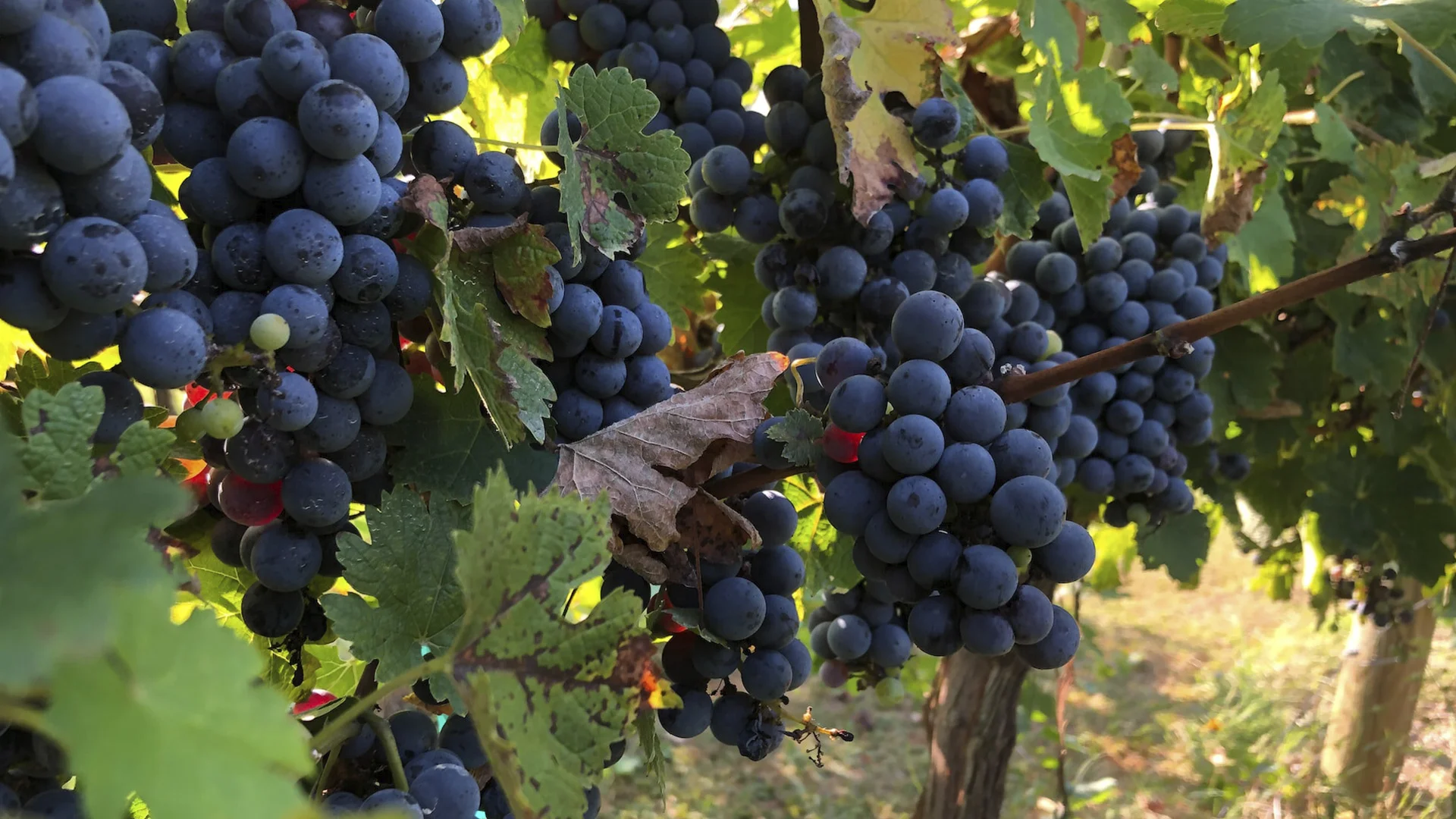
The world of wine is as vast as it is varied, with each grape variety offering a unique tale of heritage, terroir, and taste. Among these, the Merlot grape stands out as a cornerstone to some of the world’s most acclaimed wines. But what is it about this particular grape that has earned it so much admiration and veneration that it is used both in blends and to produce red wine varietals??
In this in-depth profile, we will journey through the multifaceted universe of the Merlot grape, tracing its history from ancient vineyards to contemporary wine cellars. We will delve into the viticulture conditions that give rise to the grape's distinct characteristics and explore the various regions where the Merlot grape truly thrives. Along the way, we'll touch upon the critical aspect of sustainability, underscoring its importance in the modern era of winemaking. Finally, we'll pay homage to the famous Merlot wines that have left an indelible mark on the global palate.
Merlot, renowned for its plush texture and luscious fruit-forward profile, is one of the world's most beloved red wine grape varieties. Hailing from the Bordeaux region of France, its name is believed to be a diminutive of the French word ‘merle’, meaning blackbird, possibly alluding to the grape’s dark blue hue or the bird’s fondness for the fruit.
The grape is distinguished by its large, loose clusters of round, plump berries. Its skin, thin yet vibrant, paints wines in hues ranging from ruby to deep garnet. On the palate, Merlot often presents sumptuous notes of plum, cherry, and black tea, often underlined with hints of chocolate or bay leaf. Its approachable, velvety tannins, paired with a moderate acidity, make Merlot wines incredibly versatile and widely appreciated.
Merlot plays a dual role in the wine world. It's a superstar in its own right, producing single-varietal wines that are celebrated for their depth and complexity. At the same time, it's an invaluable blending partner. Merlot and Cabernet Sauvignon take center stage in Bordeaux-style blends, as the Merlot adds softness and roundness to the wine's structure.
A hallmark of Merlot is its adaptability. While its roots are deeply entrenched in Bordeaux's gravelly soils, the grape has spread across the globe, finding homes in varied terrains, from California's sun-kissed valleys to the rolling hills of Tuscany. Its ability to express terroir means that Merlots from different regions can vary significantly, yet they all share an underlying elegance and charm that defines this variety.
Similar to some varieties, such as Pinot Noir, which can sometimes lead to confusion, certain characteristics of Merlot, such as its ability to produce medium to full-bodied wines or its aromatic notes, make it shine with its own light.
In essence, Merlot is a grape of balance - between old and new worlds, between softness and structure, and between fruit and earth. A good Merlot wine invites both the novice and the connoisseur to discover and revel in its myriad expressions.
Merlot, with its velvety texture and rich palate, is undeniably one of the most celebrated grape varieties. While you may be familiar with its tantalizing taste, there are numerous intriguing tidbits about this grape that might surprise you. Dive in and uncover the marvels of Merlot:
The Merlot grape, celebrated for its velvety texture and rich flavours, thrives in very specific conditions, reflecting its intricate relationship with the earth. Understanding the viticultural aspects of Merlot vines is pivotal for appreciating the delicate balance required to cultivate this world-renowned grape.

In summary, Merlot's delicate nature and its responsiveness to specific viticultural conditions make it both a challenge and a joy for winemakers. These nuances, from sunlight to soil, coalesce to create the wine's renowned character and charm.
The global acclaim of the Merlot grape is intrinsically tied to its adaptability, allowing it to flourish in a range of climates and soils. As this grape varietal traverses continents, it embodies the nuances of each terroir, showcasing a rich spectrum of flavour profiles and characters. Let's embark on a journey through key Merlot-growing regions and explore how diverse terroirs mold this beloved grape.
Merlot's chameleon-like nature ensures that it imbibes the essence of the terroir it's grown in. Factors such as soil composition, climate, altitude, and even local viticultural practices shape the grape's phenolic development, acidity, sugar content, and aromatic compounds. For instance, clay-rich soils, as found in Pomerol, allow for consistent moisture, leading to plusher wines. In contrast, the granite soils of certain Chilean valleys can stress the vine, resulting in wines with heightened aromatics and structure.
The balance of sunlight and temperature further accentuates Merlot's character. While cooler regions might emphasize the grape's herbal and red fruit notes, warmer climates can amplify its dark fruit flavours and increase its overall body.
In conclusion, the global journey of Merlot is a testament to its adaptability and the intricate dance it performs with each region's unique terroir. As each bottle is uncorked, it tells a story of its origin, a tale of soil, climate, and the hands that nurtured it.
In today's rapidly evolving world, the push for sustainable practices within industries is no longer just an option but a necessity, especially due to the new information available for wine drinkers. So, for the wine industry, this shift towards sustainability holds profound significance. As the Merlot grape continues to captivate wine lovers worldwide, understanding its sustainable cultivation becomes paramount. Especially for the discerning consumer of today, the journey of their favoured Merlot from vine to glass, embedded in sustainable practices, can make all the difference.
The intersection of Merlot grape cultivation and sustainability is a dynamic space, reflecting a commitment to both quality wine production and planetary health. For the modern consumer, this commitment is not just a backdrop to their wine selection but often a driving factor. As they swirl, sniff, and sip their Merlot, they aren't just indulging in a sensory delight. They are partaking in a narrative of respect — respect for the land, the grape, and the future. In that narrative, every stakeholder, from the viticulturist to the consumer, plays a pivotal role, ensuring that the legacy of Merlot is not just about its rich taste but also its richer embrace of the planet.
The world of wine, with its vast expanse and endless varieties, has few grapes that can claim the kind of universal recognition that Merlot enjoys. Its allure lies in its versatile character, adaptable nature, and the profound depths of flavours it can offer.
Over the centuries, various regions have embraced Merlot, each crafting wines that stand testament to the region's unique terroir and winemaking traditions. Within this sea of Merlot wines, certain labels have risen to prominence, establishing themselves as benchmarks of quality and expressions of artistry. Let us dive deep into the world of these legendary Merlot wines, exploring their aromas, flavours, stories, and the indelible mark they've left on the wine industry.
From the historic heartland of Bordeaux to the innovative landscapes of Napa and the sun-kissed hills of Tuscany, Merlot has showcased its unparalleled versatility. The iconic Merlot wines listed above are not just beverages; they are stories, experiences, milestones, and expressions of artistry. Each carries with it the legacy of its region, the vision of its winemakers, and the passion of all those involved in its creation. As we toast to these legendary wines, we are reminded of Merlot's eternal charm, its ability to evolve, adapt, and yet remain timeless in its appeal.
In the vast universe of wine, where each grape variety carries its own narrative, Merlot stands out as an emblem of grace, versatility, and timeless appeal. As we've embarked on this in-depth exploration, we've unravelled the myriad facets of this captivating grape variety, and for a wine lover, each facet is a testament to Merlot's endearing legacy.
We began our journey by understanding the very essence of the Merlot grape variety. Its distinct characteristics, from its dark blue hue, lighter than the intense blue-black of Cabernet Sauvignon, to its thinner skin rich in flavour and lower in tannins, set the foundation for the celebrated profile that Merlot wines tend to have. It's these inherent traits, coupled with its winemaking processes, that shape the luscious notes of black cherry, raspberry, and plum that dance on the palate of every Merlot enthusiast.
Diving into the annals of history, we discovered the storied past of Merlot, from its earliest mentions in Bordeaux to its global conquest, marking its footprint across diverse terroirs, from the Tuscan hills to the sun-kissed California valleys. Its evolution was not just a matter of time but a testament to its adaptability and the passionate vignerons who saw potential in every Merlot vine.
Merlot's adaptability can be attributed to its unique viticultural conditions. Its preference for cool, clay-rich soils and its early ripening nature allows it to flourish in regions where other grapes might struggle. But this adaptability comes with its vulnerabilities—its propensity to over-ripen, its susceptibility to certain vine diseases, and its delicate balance with climatic conditions. Yet, the challenges only accentuate the meticulous care and expertise that go into crafting each bottle.
Speaking of regions, our exploration took us through the key terroirs where Merlot thrives. From its native Bordeaux, where it reigns supreme, to Tuscany's Super Tuscans and Napa's plush vineyards, Merlot wears the essence of each region, a reflection of the soil, climate, and the hands that nurture it.
In today's age, where consumers are increasingly conscious of the environment and the ethics of their choices, Merlot's journey toward sustainability stands out. The innovative methods in soil management, prudent water usage, and endeavours to reduce the carbon footprint not only ensure the longevity of Merlot vineyards but also resonate with the ethos of the modern consumer.
Lastly, we toasted to the icons, the famous Merlot wines that have carved their names in the annals of viniculture. These red wines are not just beverages; they are experiences, legacies bottled for posterity, epitomizing the best of what Merlot has to offer.
In conclusion, for a consumer, Merlot is more than just a grape; it's a narrative of history, geography, culture, innovation, and passion. Whether you find it in classic Bordeaux blends or in a New World single varietal, with every glass of Merlot you're partaking in a global legacy. Here's to Merlot—a wine that continues to enchant, surprise, and satiate souls across the world.
.webp)

.webp)





















Are you interested in
collaborating with us?